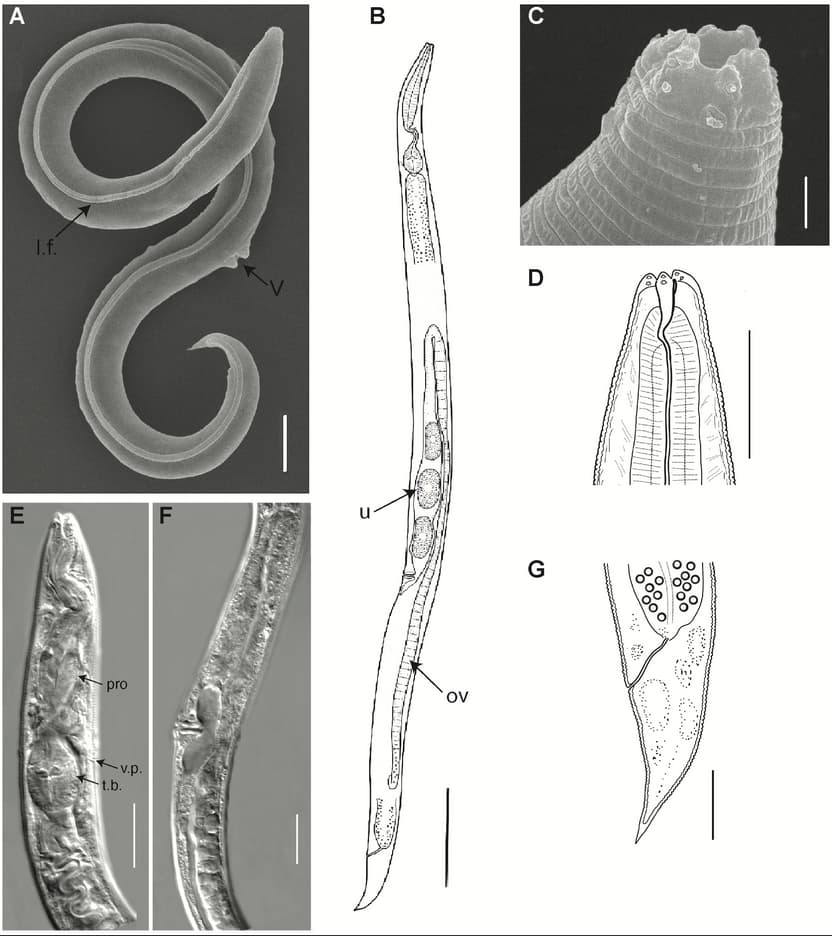In 2002, a frozen nematode (roundworm) was excavated from a fossilised squirrel burrow in the permafrost near the Kolyma river in Siberia. Maintained in frozen condition in the laboratory, in 2018 the sample was defrosted and the worm came back to life, moving and eating. Researchers reported this as the first observation of “natural cryopreservation”, a process through which a few species of animals can survive freezing and subsequent thawing by internal chemical processes that prevent damage to cell membrane by the formation of ice crystals.
Now, in a paper published n the 2023-07-23 issue of PLOS Genetics, “A novel nematode species from the Siberian permafrost shares adaptive mechanisms for cryptobiotic survival with C. elegans dauer larva” (full text at link), researchers establish the age of the Siberian organism, which they identify as a new species, Panagrolaimus kolymaensis, from the late Pleistocene era, around 46,000 years before the present. Genetic analysis shows the molecular toolkit that enables survival is similar to that of the model organism Caenorhabditis elegans. Here is the abstract.
Some organisms in nature have developed the ability to enter a state of suspended metabolism called cryptobiosis when environmental conditions are unfavorable. This state-transition requires execution of a combination of genetic and biochemical pathways that enable the organism to survive for prolonged periods. Recently, nematode individuals have been reanimated from Siberian permafrost after remaining in cryptobiosis. Preliminary analysis indicates that these nematodes belong to the genera Panagrolaimus and Plectus. Here, we present precise radiocarbon dating indicating that the Panagrolaimus individuals have remained in cryptobiosis since the late Pleistocene (~46,000 years). Phylogenetic inference based on our genome assembly and a detailed morphological analysis demonstrate that they belong to an undescribed species, which we named Panagrolaimus kolymaensis. Comparative genome analysis revealed that the molecular toolkit for cryptobiosis in P. kolymaensis and in C. elegans is partly orthologous. We show that biochemical mechanisms employed by these two species to survive desiccation and freezing under laboratory conditions are similar. Our experimental evidence also reveals that C. elegans dauer larvae can remain viable for longer periods in suspended animation than previously reported. Altogether, our findings demonstrate that nematodes evolved mechanisms potentially allowing them to suspend life over geological time scales.
This is a popular article from Live Science describing the research.
